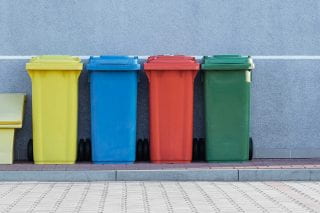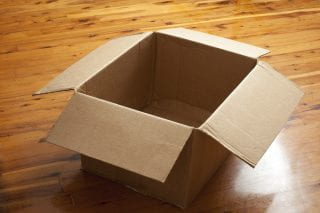As the coming semester looms closer and closer on the horizon, many of the University of Arkansas’ students are finding their way back to Fayetteville. And whether they’re headed to an on-campus residence hall, a snazzy apartment, or a local house, that means about 20,000 people are getting ready for a massive move-in.
Those of you who have moved somewhere before know that relocation can generate a lot of trash. Between the packing peanuts, bubble wrap, and tape, you’re lucky if you can confine your waste to a single trash bag. A Zero-Waste Move-In might seem like a futile goal, but luckily for you, we here at the Office for Sustainability have put our heads together and come up with a 3 step action plan to help you reduce your move-in mess.
The 3 Steps to A Zero Waste Move-In
1. Choose your Box Wisely
When it comes to zero-waste moving, not all boxes are created equal. While reusing old cardboard boxes is better (and cheaper) than buying new ones, it is actually best to forgo using cardboard altogether. The best boxes on the zero-waste scene are eco-friendly, reusable plastic tubs. These tubs are generally made with old, hard-to-recycle plastics and last pretty much forever. They are available for rent at this website. Another option is to buy storage tubs from a local store (save money and score bonus points by finding them at thrift stores). These tubs are usually cheap, durable, and many models can fit under beds and in closets. That way, not only can you use the tub to bring things to your new digs, you can use the tub as storage once you get there. Lastly, if you do end up defaulting to cardboard to move your things, Fayetteville has a local business that sells used cardboard boxes for much cheaper than new. They’ll even buy back the boxes from you after you’re done, reducing waste and saving you a few bucks. You can access their site here.
2. Get creative with padding
A lot of the waste from moving comes from the stuff we stick in boxes to keep our possessions from breaking. Most people already know each of these items has a more eco-friendly option available on the market; bubble wrap has geami wrap, packing peanuts have their bioplastic cousin. The problem with these substitutes is that they tend to be much more expensive than their unsustainable counterparts. Luckily for all ofus, there is another option that is both more sustainable and cheaper than traditional packing materials. Towels, blankets, bedding, and even clothes are fantastic cushioning material. You can wrap them around your breakables and stuff them in your boxes to keep your things safe. The best thing about using this method of moving is that you would have to pack most of this stuff anyways, so you’ll be saving both money and packing space. How’s that for a win-win situation?
3. Recycle Everything!
 The last step to achieving a Zero Waste Move-In comes at the close—recycling your waste. For those of you taking to the residence halls, this will be really easy. Every dorm will already be set up with drop-off spots to recycle cardboard, you can recycle any plastic #1- 7 in any plastics recycling bin on-campus (this includes bubble wrap), and packing paper can be put in the mixed-paper recycling bin found in every dorm building. For those of you choosing to dwell off campus, you have many options as well. Several apartment complexes have recycling drop-off points on their property, and Fayetteville has recycling hubs where anyone can come drop off their recyclables. If you want to learn more about why recycling is important and what impact it actually has, check out this infographic.
The last step to achieving a Zero Waste Move-In comes at the close—recycling your waste. For those of you taking to the residence halls, this will be really easy. Every dorm will already be set up with drop-off spots to recycle cardboard, you can recycle any plastic #1- 7 in any plastics recycling bin on-campus (this includes bubble wrap), and packing paper can be put in the mixed-paper recycling bin found in every dorm building. For those of you choosing to dwell off campus, you have many options as well. Several apartment complexes have recycling drop-off points on their property, and Fayetteville has recycling hubs where anyone can come drop off their recyclables. If you want to learn more about why recycling is important and what impact it actually has, check out this infographic.
A Zero Waste Move-In is a great way to start the year committed to sustainability.
We here at the OFS are proud to be part of the solution in striving for campus sustainability.
Check out our mission and what we are up to on our website.
Want to learn about more ways you can make your life more sustainable? Click here and here
Want to learn more about reducing and recycling paper? Click here and here


